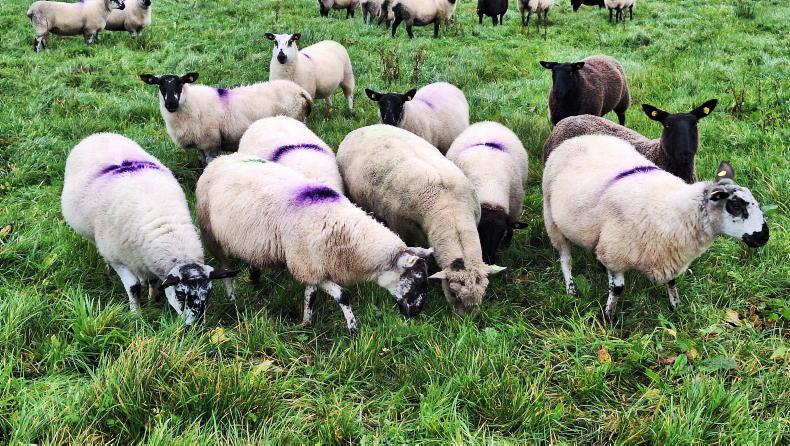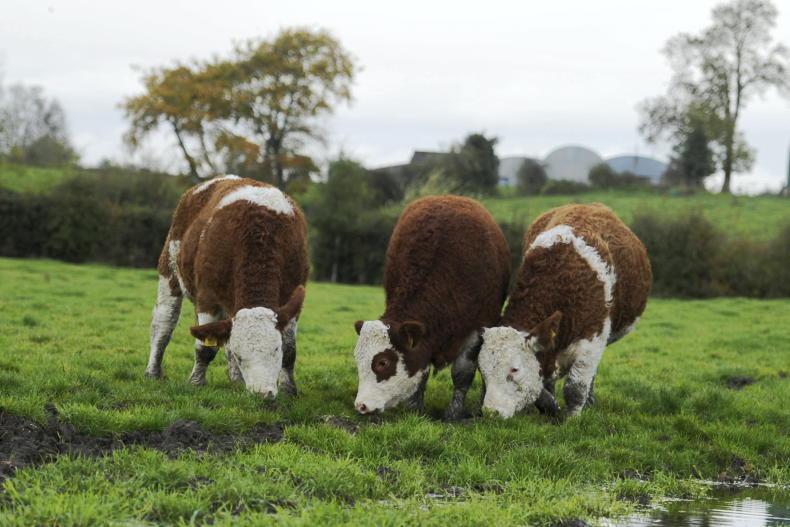The weather forecast for the coming days and week is quite unsettled with a really poor day expected Thursday across much of the country and wet weather throughout the weekend in many areas.
The excellent conditions enjoyed by farmers over the last four weeks seem, unfortunately, to be coming to an end. Looking further ahead to next week, while the low temperatures look set to dissipate, there seems to be a return to milder wetter weather on the horizon.
This will bring with it a challenge for those with stock at grass.
Immediately, with wintery showers and low temperatures some may be forced to re-house stock in the coming days while others, perhaps on heavier ground will house before any of this weather appears, thankful for the grazing that has been achieved up to this point with good graze outs and little or no damage done.
Where the forecast is poor in your area and you think you may have to rehouse, I would suggest doing it before the really bad weather arrives, as this will minimise the stress on stock and the herder.
There is little or no chemical fertiliser out on drystock farms as of yet and in reality, I don’t think farmers have missed any great amount of growth by keeping it in the yard up to now. If the milder conditions do arrive next week, it will be time for many to be thinking about the first application of nitrogen in many cases.
Niall O’Meara – Killimor, Co Galway
I have 68% of the farm grazed, which is probably a little ahead of where I should be but, with the forecast changeable I might not get as much grazed.
I have been getting all stock out by day and back in at night since 1 February. The 18-month old heifers are out a week longer than that.
Grazing by day has reduced silage usage from two and a half, down to one bale per day. I have enough silage in the yard to see me into April.
Weanling bulls are getting meal ahead of weaning in April. I feed it in their own pen so it coaxes them through the creep gate from the cows which makes weaning much easier when it happens.
Half the farm received 1,750gal/acre of slurry. No chemical fertiliser has been spread to date.
System Suckler to weanling
Soil type Variable
Farm cover (kg DM/ha) 440
Growth (kg DM/ha/day) 13
Demand (kg DM/ha/day) 7
Derek O’Donoghue – Salesian College, Pallaskenry
We have had great growth, although I expect it to dip this week. All the yearling cattle have been at grass for the last few weeks. With heavy covers built up over winter we needed to graze them out early.
Ground that was closed since 10 October had covers over 2,000kgDM/ha.
Graze outs were excellent given the conditions. We plan to rehouse the 25 bullocks now, as we need to prioritise grass for the ewes who start to lamb next week. The heifers will remain at grass.
We spread 18 units/acre of protected urea across the farm and we are now following up with 2,500gal/acre of slurry on paddocks as they are grazed. This is to try and get best use out of the slurry and reduce our overall nitrogen usage.
System Dairy calf-to-beef & sheep
Soil type Free draining
Farm cover (kg DM/ha) 675
Growth (kg DM/ha/day) 21
Demand (kg DM/ha/day) 7
Shaun Diver – Tullamore Farm, Co Offaly
I spread a half bag of urea on almost 70 acres last week and there was a definite response in growth, especially on ground that had a nice cover of grass. On Tuesday 26 acres of silage ground received 2,500gal/acre of slurry.
This is the ground that ewes grazed up to housing in December.
There are 55 cows calved and things are going well, with two or three calvings a day. Of these, 21 of the longest calved are at grass while I am holding off letting out anything else until we see what the weather does.
The stock that are out got a move to fresh grass on Wednesday so that they would be content on Thursday if the weather is bad. They are grazing covers of between 1,400kgDM/ha and 1,500kgDM/ha.
System Suckler to beef
Soil type Variable
Farm cover (kg DM/ha) 778
Growth (kg DM/ha/day) 17
Demand (kg DM/ha/day) 11










SHARING OPTIONS